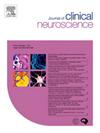Impact of cement cranioplasty on cerebrospinal fluid leaks after retrosigmoid craniotomy − A systematic review and meta-analysis
IF 1.9
4区 医学
Q3 CLINICAL NEUROLOGY
引用次数: 0
Abstract
Background
Cerebrospinal fluid (CSF) leaks and related complications (CLRC) are common after retrosigmoid approaches for cerebellopontine angle (CPA) surgeries. Bone cement cranioplasty (CCP) may provide additional sealing benefits over reconstruction without cement (RWC) in reducing these complications. This study aimed to compare the outcomes of CCP versus RWC in CPA surgery.
Methods
A systematic review and meta-analysis following PRISMA guidelines was conducted using three databases (PubMed, Scopus, Web of Science). Studies were included comparing CCP and RWC in retrosigmoid craniotomies/craniectomies for CPA pathologies. Primary outcomes were pseudo meningocele, external CSF leaks, and CLRC, while secondary outcomes included wound infection rates and rates of reoperation for wound problems. Results: Five retrospective studies were analyzed with 1,838 patients (931 CCP, 907 RWC). CCP significantly reduced the rates of pseudo meningocele (OR 0.264, CI 0.150–0.463), wound CSF leaks (OR 0.105, CI 0.028–0.399) and CLRC (OR 0.248, CI 0.078–0.794). In the CCP group, there were fewer wound infections (OR 0.310, CI 0.114–0.790) and lower reoperation rates (OR 0.189, CI 0.050–0.708).
Conclusions
Cement cranioplasty is associated with a lower incidence of CSF leaks and related complications compared to RWC following retrosigmoid approaches for CPA pathology. CCP also reduces reoperations and wound infections. These findings support using CCP as an effective technique for lowering postoperative complications of retrosigmoid approaches.
求助全文
约1分钟内获得全文
求助全文
来源期刊

Journal of Clinical Neuroscience
医学-临床神经学
CiteScore
4.50
自引率
0.00%
发文量
402
审稿时长
40 days
期刊介绍:
This International journal, Journal of Clinical Neuroscience, publishes articles on clinical neurosurgery and neurology and the related neurosciences such as neuro-pathology, neuro-radiology, neuro-ophthalmology and neuro-physiology.
The journal has a broad International perspective, and emphasises the advances occurring in Asia, the Pacific Rim region, Europe and North America. The Journal acts as a focus for publication of major clinical and laboratory research, as well as publishing solicited manuscripts on specific subjects from experts, case reports and other information of interest to clinicians working in the clinical neurosciences.
 求助内容:
求助内容: 应助结果提醒方式:
应助结果提醒方式:


